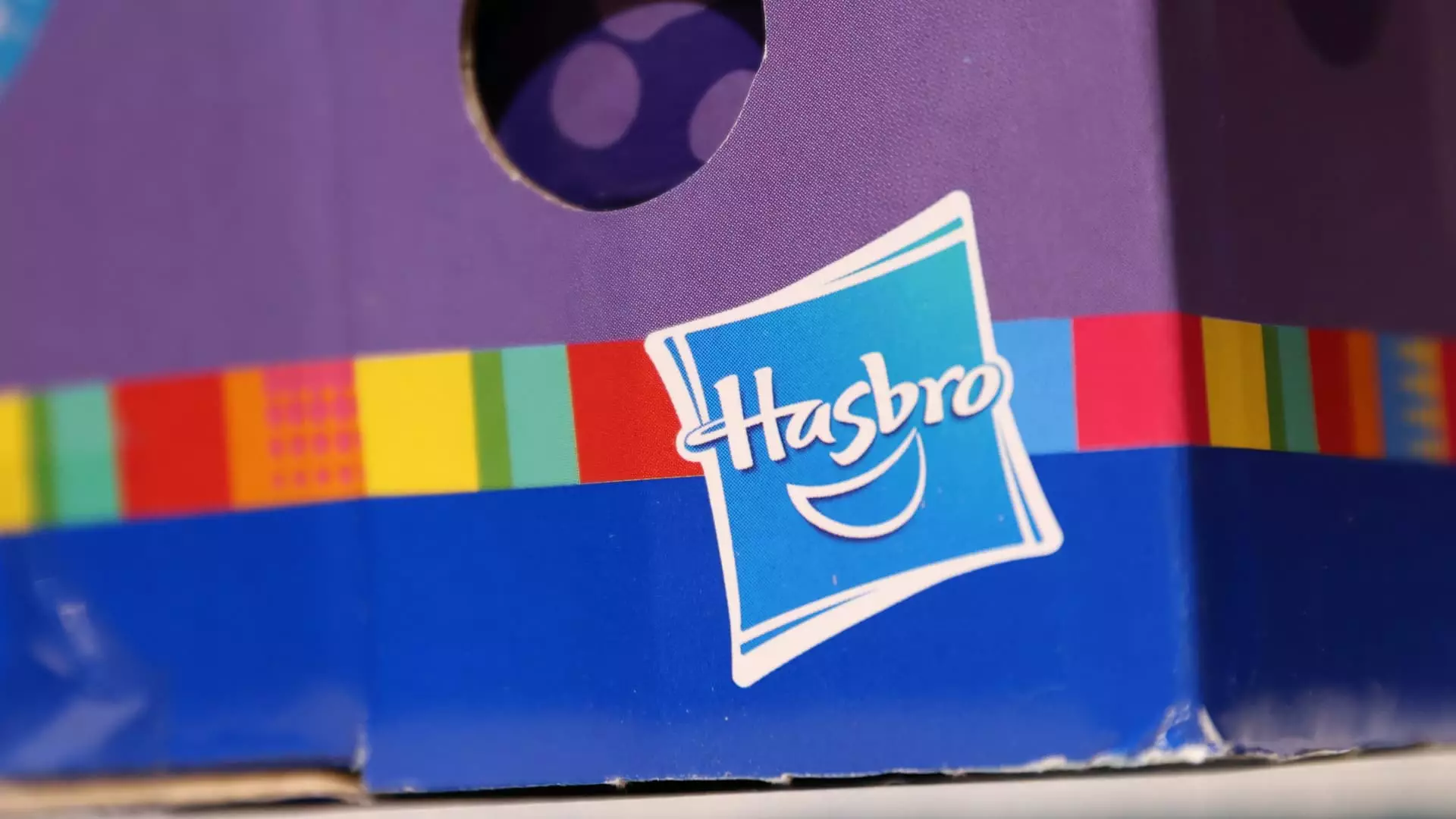In an era where international trade policies profoundly influence corporate strategies, Hasbro stands out as a notable player adapting to evolving economic circumstances. The toy and gaming giant recently shared insights on its future growth prospects during a fourth-quarter earnings call while acknowledging the impact of tariffs and shifting manufacturing dynamics. As Hasbro seeks to mitigate the challenges posed by U.S. tariffs on Chinese imports, its forecasting suggests both strategic agility and optimism for continued profitability.
Hasbro’s Chief Financial Officer, Gina Goetter, characterized the company’s perspective on tariffs as cautiously optimistic. During the earnings call, she outlined the firm’s projections for 2025, which indicate an adjusted EBITDA target of between $1.1 billion and $1.15 billion—up from $1.06 billion in 2024. This encouraging outlook suggests that Hasbro has not only recognized the potential ramifications of the tariffs imposed by the U.S. on imports from China but has also developed a robust strategy to navigate this complex landscape. Furthermore, the anticipated measures to strengthen the supply chain and adjust pricing demonstrate Hasbro’s proactive approach to safeguarding its margins.
Central to Hasbro’s future strategy is significantly decreasing its manufacturing dependency on China. Goetter confirmed that the company aims to reduce the percentage of toy and game products sourced from China from 50% to below 40% over the next two years. In light of the tariffs announced by the Trump administration, which include a potential increase to 25% on additional imports from Mexico and Canada, it’s clear that Hasbro is re-evaluating its supply chain strategy. By diversifying its manufacturing footprint, the company aims to mitigate tariff impacts, while simultaneously enhancing its competitive edge in the rapidly evolving toy market.
When examining Hasbro’s financial performance, it’s essential to consider the larger industry context. The company reported a 15% decline in fourth-quarter revenue year-over-year, dropping to $1.1 billion from $1.29 billion. This decline was partly attributed to the divestiture of its eOne film and TV segment, challenging the overall revenue landscape. However, when excluding the effects of the divestment, year-over-year revenue saw a more manageable decrease of 7%. This distinction points to the resilience of Hasbro’s core business and its ability to adapt to external changes.
Moreover, Hasbro’s net loss of $26.5 million during the fourth quarter demonstrates the challenges faced, though this was a marked improvement compared to the staggering $1.06 billion loss in the same quarter the previous year. This shift indicates a steadying of operations and highlights the effectiveness of the company’s strategic pivots amidst external pressures.
A key segment of Hasbro’s strategy lies in its digital and licensed gaming revenues, which surged by 35% in the fourth quarter. This increase is indicative of changing consumer preferences, with more individuals gravitating towards interactive digital experiences. Mobile games like Monopoly Go! have proven especially lucrative, contributing significant revenue to the overall earnings. This pivot towards digital spaces not only provides Hasbro with a buffer against traditional market fluctuations but also allows it to engage with a younger, tech-savvy audience.
In an astute move to harness cross-brand synergy, Hasbro recently announced a licensing collaboration with rival Mattel, creating Play-Doh versions of Barbie dolls. This innovative project is designed to encourage creativity among children, allowing them to repurpose Play-Doh in the creation of fashion designs. Collaborative endeavors like this not only enhance product offerings but also showcase Hasbro’s commitment to fostering creativity and imaginative play—essential attributes that resonate deeply with its consumer base.
As Hasbro embarks on this transformative journey, its ability to navigate economic uncertainties with adaptability and innovation is a testament to its resilience in the toy and gaming industry. Despite the challenges posed by international tariffs and a competitive market, Hasbro’s strategic shifts, from reducing its reliance on Chinese manufacturing to embracing digital gaming, exemplify a forward-thinking approach. With continued focus on product innovation and strategic partnerships, Hasbro is poised to remain a dominant force in the industry, adeptly maneuvering through turbulent waters while fostering sustained growth.

